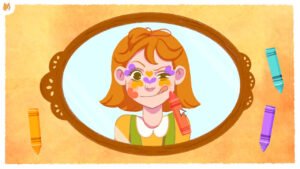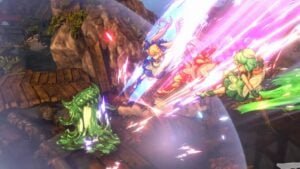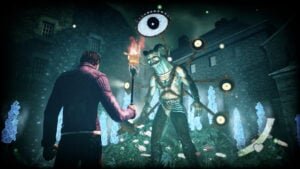When you talk about comic creators, few names come up that can be said to have had a definite influence on the medium, than Marv Wolfman and Jim Lee.
Marv Wolfman has been writing comics since the 60s and is best known for the Teen Titans and the seminal 80s comic book “mega-event” Crisis on Infinite Earths. Jim Lee has been one of the most influential artists in comics since the 90s with his work on The Uncanny X-Men and then his move to DC where he worked on prominent stories like Hush for the Batman comic. When a new massively multi-player online game was conceived that would bring the DC universe to life, titled simply DC Universe Online, both of them answered the call, and they talked to us about the project.
CGMagazine: First off, since we’re talking about a video game project, what kind of gaming experience do you have?
Marv Wolfman: Well, I guess I started as so many people do, in the arcades, pumping in more quarters than you can imagine. As soon as the first consoles came out, I bought them. I got the Colecovision. Colecovision did both Atari and Nintendo games. Then I went to PC, or games that were on the Mac, at least, so Doom and Wolfenstein… went to Myst, 7th Guest, a bunch of different titles. I got out after a while because the quality of the games started falling, and I came back with the PS2. Then I got the Xbox 360 and then the PS3, which is actually my console of choice.
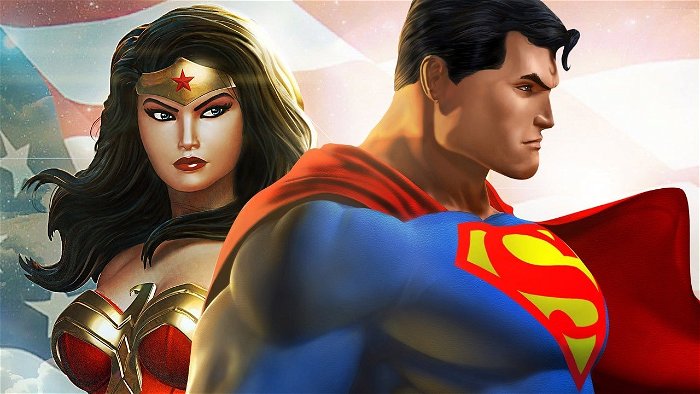
Jim Lee: Dude, I was there with Pong. My dad bought that for me and my sister and we spent hours playing this thing with two little squares and a ball that bounced back and forth. That was the most entertaining, awesome game ever! And then I moved on to Atari, with the little joysticks, and then Space Invaders at the mall, Defender… and then Zork…
CGMagazine: You were into text adventure games?
Jim Lee: Yes, Zork was awesome. I spent much of my senior year goofing, not working on my thesis, playing Zork, but I beat it.
CGMagazine: I heard Jim Lee has some hardcore MMO experiences under his belt.
Jim Lee: In EverQuest, I was the first person on my server to get an epic weapon. This was back in the day when they only had one epic weapon per class, and it was the Paladin sword—I was a Paladin. If you’ve played any of these games, you know there’s a lot of raiding, but this was raiding before it was called raiding. Kill all these dragons, get all these crazy items which are required, and you had to do it with the help of 20, 25 people. So I ended up obtaining the first Fiery Avenger on my server, and I remember when that happened, we’d camped the Plain of Fear for like… 20 hours, or it felt like 20 hours.
And when it happened, the GM showed up and broadcast a message throughout the server that my character had obtained this, and I got all these tells… my chat window went purple. I counted, there were like 650 different tells from people that were playing at that time, saying congratulations. Probably one of the high points of my playing career. And then I thought “Wow, can’t go anywhere else but down.” Shortly after that, I stopped playing EverQuest because it was consuming my life, I was scared to type in “/played” to see how many hours I’d put into it. But it was a pretty profound experience. I’d never gotten into a game to that degree.
CGMagazine: What about games that you’d recommend? Marv, for example, are there any games that you as a writer found interesting?
Marv Wolfman: The first game that really got me hot about games with writing was God of War.

CGMagazine: Really?
Marv Wolfman: Really. Because… you could look at it as just a button masher if you want, but it’s a very driven character story. It is about someone who first takes the blame and then is avenging the death of his family. It’s a very powerful story with a lot of surprises along the way. But then, interspersed between all the fight stuff—at least in the very first one—is a lot of strategy type play, so you had to figure out things other than fighting. From there, things like Portal. Loved that game, it’s a brilliant game.
“I get the final version of the DCU game, since I was playing the beta, and I can’t wait to play the actual game.”
Uncharted… Oh God, there are so many of them out there, I play as many of them as I can through, but I’m not the world’s greatest player, and I can’t devote 50 hours a day like some can, but I’m currently playing through Red Dead Redemption, and as soon as I get the final version of the DCU game, since I was playing the beta, and I can’t wait to play the actual game.
CGMagazine: So since you’ve mentioned DC Universe Online, let’s move on to that. How did you two get involved in this project? Were you approached or did you approach the companies involved?
Jim Lee: The actual history is a little convoluted. It was a confluence of different things happening at the same time. When EverQuest blew up, they actually had a get together at a local Karl Strauss. It was the very first meeting of local players that wanted to see developers, and management at Sony—back then it was called Verant Interactive. So I actually went to that, and I met [EverQuest creator] Brad McQuaid and [SOE President] John Smedley.
My love of the game extended beyond getting loot, I wanted to know “How do you create games like this? What is a loot table?” And that’s how we established that relationship. And then I heard that Warner Brothers was doing a DC online game, and when I heard that was happening, I raised my hand and said, “Look, I love playing these games, I know a lot about them, I know people that create these games, please let me be involved, because it’s a little different than building a single-player console game.” So I actually got attached very early on, and once SOE was mentioned, I was like, “Wow, these are the people you want to go with.” And that kind of set up the initial team I flew out to Austin, where the game was being produced. That was about five years ago.
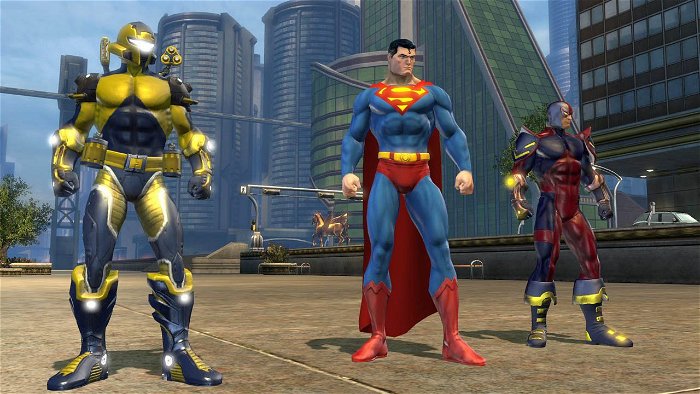
Marv Wolfman: I was asked by DC president Paul Levitz and Hank Kanalz of Wildstorm—now DC—if I’d be interested. They knew I was a games writer. Besides a player, I had been writing games for about five to seven years, not only for DC but for other companies. So they were aware that I combined the two skills, plus, with a game like the DCU MMO, my background on Crisis on Infinite Earths where I was manipulating hundreds of characters at once would come in handy. I really enjoyed that process of trying to figure out how to make a lot of characters come together in a very cohesive atmosphere, which is why I did Crisis. So I made sense as a writer, because I was a game player, a game writer and I liked large groups of characters.
CGMagazine: Was there much interaction between the various DC members while working on the game, like Geoff Johns?
Marv Wolfman: Oh yeah. First of all, I’ve known both Geoff and Jim for years. Probably a little closer to Geoff because we lived near each other for a long time. I was dealing with them very much in the beginning, not on the actual work, because I did that out of my house, I had meetings down at Sony in Austin, and Jim would be down there. On occasion, Geoff and I would go out to lunch and talk about what needed to be done. Geoff’s involvement was creating the structure to the Brainiac storyline. My involvement was not that. So we didn’t have to converse constantly on it. I was coming up with all the other types of missions, the ones that fill up the bulk of the game and would lead to Brainiac missions. But Geoff had already come up with the Brainiac storyline that would become the central spine of the game.
Jim Lee: Everyone in comics knows each other. Geoff’s the [DC] chief creative officer, so he and I are part of the management team that runs DC comics. We talked all the time and see each other all the time. And Marv’s a legendary writer, he wrote the comics I grew up on, that inspired me to become a comic book creator. So none of this stuff happens in a vacuum, none of us are just working in a cubicle and e-mailing our work in. There’s a lot of passion for the characters obviously but there’s a lot of passion for the game. Both Geoff and Marv are gamers and they chose to be part of the project, it’s not an assignment for them.
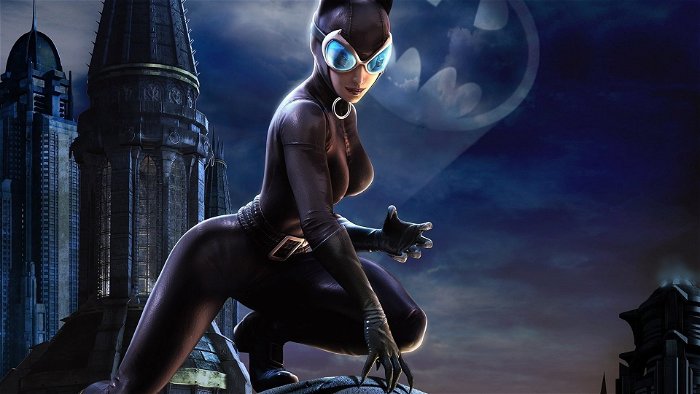
CGMagazine: So what was the exact level of involvement? As a writer and an artist?
Marv Wolfman: I was coming up with missions. I did not do dialog on this game, because frankly there’s very little dialog. There’s instructions, but it would have been a waste of my time, because you needed to have somebody at the Sony offices who would keep up to the minute by minute changes as the game developed. Whereas I can come up with missions, and the idea was to make certain that they fit the DC characters. So I came up with missions that involved Superman, they would absolutely be the type of storyline that Superman would face. Or the Flash, or Cyborg, or Luthor, or Joker, or any of the other characters down the line. My job was to make sure the missions made sense and were “DC-centric” for the characters. I was not there to write dialog or even to break down the missions in the final version, that was the game developers. My job was to come up with very DC storylines that would work within a game.
Jim Lee: The way I would describe it is… I’m the eyes and ears for DC on the game. The stuff I was very hands on involved with was the concept art, and the look of the game. Early on we recruited a handful of comic book artists—and new artists, actually—to be part of the concept team. So everything you see in the game for the most part was concepted out as a 2D drawing and we actually went through and found all the classic, iconic versions of all these characters and did 3D turn-arounds, colored them, sent those in, and they built the 3D assets of those. Then they would send JPEG assets of those back to me and I would refine them and… it was really trying to teach the modelers kind of my style, how I crafted faces, chins and physiques, poses in animation…
CGMagazine: So, how to draw video games the Jim Lee way?
Jim Lee: Well, yeah! The weird thing about it is I was actually teaching myself. I’d never really thought about it, I never broke it down, I just do it by instinct. You’re on the story, you’re trying to draw the coolest image to create the emotional impact you want, but I never really broke it down and measured how far the eye brow was off the eye, how I construct hair. But I had to elaborate upon it and essentially teach these guys. And early on there were a lot of notes that I had to send, but after several years they obviously started internalizing my style, and as they started sending back 3D models, my comments were far, far fewer. And there were a lot where I just said “This looks great, this looks awesome.” It was a very collaborative working method that we established. It’s a real credit to the art directors at SOE, Jerry Carr and Marc Anderson that they’d allow an outside person to come in and be that integral to the art team.

CGMagazine: In more general game terms, there’s still a lot of argument about games as art, and to some there’s a feeling that games have become the new corruptive scapegoat for youth that comics used to be. Any thoughts on that?
Marv Wolfman: Oh, I disagree with your premise. There’s a big difference. Comics, for a long time, were aimed at kids. They were written throughout the late 40s and the 60s for people from 8 to 12. Prior to that, they weren’t, and since the 80s they aren’t. Video games have never been for one audience. Video games to me are like books. There are books for adults and books for kids. Therefore, I do not accept that video games are a pariah. There may be some specific games that some people object to because of one reason or another, usually violence, but those games are actually rated for adults. And therefore I have no problem with them, but games appeal to every audience. I’d like to say, and I hope I won’t embarrass him when he reads this, but my father-in-law who had an Xbox, asked for Christmas to get a PS3, because he wanted to play. He’s my father-in-law, and I’m pretty up there, so you can believe he’s older than me, so video games don’t have an age on them. Comic books could not get around that until they grew up as an industry. Video games are already there.
Jim Lee: I think games are… a lot of fun [laughs]. I don’t get too political about it. A game, when done well, is engaging, entertaining… it touches our need for escape and fantasy in our lives. I don’t look to games to be role-models for kids or raise our kids. They’re good old fashioned fun, and the best games are really very engaging, it’s not a passive experience. In the hierarchy of entertainment that’s good for you, I actually put games pretty high on the top there, as a beneficial, positive experience.


